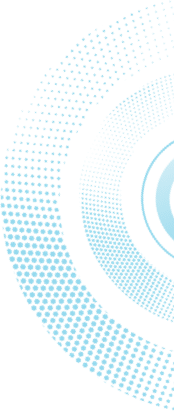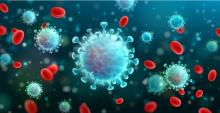חדשות המחקר
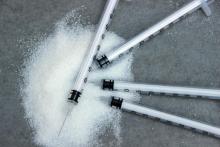
Adnan Zaina: COVID-19 Pandemic and Ramadan Fasting among Patients with Type 2 Diabetes Mellitus (Isr Med Assoc J . )
This year Ramadan occurs during the global coronavirus disease-2019 (COVID-19) pandemic. Data has shown that patients with type 2 diabetes mellitus (T2DM) are prone to severe disease with COVID-19 and with increased mortality. Acute complications such as dehydration, starvation ketosis, ketoacidosis, and the increased risk of coagulopathy and thrombosis should be considered particularly during this pandemic period. Fasting during Ramadan this year and the COVID-19 pandemic is more challenging, not only for patients with T2DM but also for healthcare providers. We present healthcare providers with important aspects to consider during the COVID-19 pandemic for patients with T2DM who intend to fast during Ramadan and other fasting days.
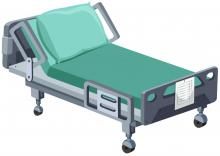
Khalaf Kridin: Hidradenitis Suppurativa and Sleep Disorders: A Population Based Study (J Eur Acad Dermatol Venereol .)
Hidradenitis suppurativa (HS) is a chronic auto-inflammatory skin condition. (1) Obstructive sleep apnea (OSA) is characterized by airway collapse and hypoxia during sleep.(2) HS and OSA have overlapping comorbidity and cytokine (eg. interleukin-17 and tumor necrosis factor-α) profiles, suggesting the possibility of an association.

Amir A Kuperman: Emicizumab prophylaxis: Prospective longitudinal real-world follow-up and monitoring (Haemophilia .)
Real-world data on prophylaxis of severe haemophilia A (HA) patients treated by emicizumab are scarce. Studies the efficacy and safety of longitudinal emicizumab prophylaxis and assess laboratory monitoring correlations in a large patient cohort.
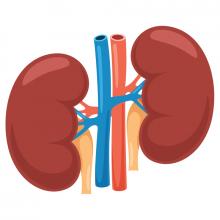
Khalaf Kridin: Chronic renal comorbidities in pyoderma gangrenosum: a retrospective cohort study (Immunol Res .)
The coexistence of pyoderma gangrenosum (PG) and chronic renal comorbidities has been reported anecdotally. We aimed to assess the bidirectional association between PG and the following chronic renal comorbidities: chronic renal failure (CRF), dialysis, kidney transplantation (KT), and other kidney diseases (OKD).

Wisam Sbeit, Tawfik Khoury, Amir Mari: Diagnostic approach to faecal incontinence: What test and when to perform? (World J Gastroenterol .)
Faecal incontinence (FI) is a debilitating common end result of several diseases affecting the quality of life and leading to patient disability, morbidity, and increased societal burden. Given the various causes of FI, it is important to assess and identify the underlying pathomechanisms. Several investigatory tools are available including high-resolution anorectal manometry, transrectal ultrasound, magnetic resonance imaging, and electromyography. This review article provides an overview on the causes and pathophysiology of FI and the author's perspective of the stepwise investigation of patients with FI based on the available literature.
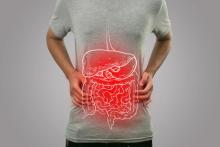
Nonattendance to gastroenterologist follow-up after discharge is associated with a thirty-days re-admission in patients with inflammatory bowel disease: a multicenter study (Minerva Med. )
Inflammatory bowel disease (IBD) is a set of chronic inflammatory diseases associated with significant morbidity and high hospitalization rate. IBD patients are particularly prone to re-hospitalization resulting in high medical cost and morbidity. The aim of this study is to assess laboratory and clinical predictors of re-admission in patients who were hospitalized with IBD flare. (Wisam Sbeit, Tawfik Khoury, Anas Kadah, Amir Shahin, Asher Shafrir, Itai Kalisky, Wadi Hazou, Lior Katz, Amir Mari)
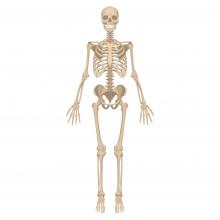
Alon Barash: Sexual dimorphism of the posterior cervical spine muscle attachments (J Anat .)
Cervical spinal injury and neck pain are common disorders with wide physical implications. Neck pain and disability are reported to occur in females more often than in males, and chronic or persistent neck pain after whiplash is twice as common in females. Female athletes also sustain a higher percentage of concussions compared to male athletes. Still, while sexual differences in clinical presentation and outcome are well-established, the underlying etiology for the disparity remains less clear.

Omry Koren: Autologous fecal microbiota transplantation can retain the metabolic achievements of dietary interventions (Eur J Intern Med . )
We recently reported that autologous fecal microbiota transplantation (aFMT), derived from the time of maximal weight-loss and administrated in the regain-phase, might preserve weight loss and glycemic control in moderately obese subjects, and is associated with specific microbiome signatures. Here, we sought to explore the global effect of aFMT on adipokines, inflammatory markers and blood cholesterol and on the overall gut microbiome preservation.
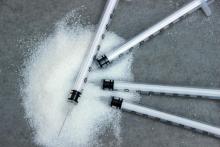
Adnan Zaina, Yuval Grober, Ali Abid, Eldad Arad, Elena Golden, Samih Badarny: Sodium glucose cotransporter 2 inhibitors treatment in acromegalic patients with diabetes-a case series and literature review (Endocrine .)
Diabetes mellitus (DM) represents one of the most frequent comorbidities in patients with acromegaly. Sodium-glucose cotransporter 2 inhibitors (SGLT2i) represent an important class for diabetes management. However, limited data is reported regarding the use of this class in patients with acromegaly and diabetes....The present article provides us for the first time with new data regarding the use of SGLT2i among acromegalic patients with diabetes.
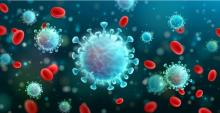
Tatiana Smolkin, Eric S Shinwell: Neonatal SARS-CoV-2 Infections in Breastfeeding Mothers (Pediatrics . )
Assesses infection rates predischarge and postdischarge in breast milk-fed newborns with severe acute respiratory syndrome coronavirus 2 (SARS-CoV-2)-positive mothers who were separated postdelivery from their mothers and discharged from the hospital. Also, aims to evaluate breastfeeding rates predischarge and postdischarge.

Dana Binyamin, Orna Nitzan, Maya Azrad, Zohar Hamo, Omry Koren, Avi Peretz: The microbial diversity following antibiotic treatment of Clostridioides difficile infection (BMC Gastroenterol .)
Clostridioides difficile (C. difficile) is a major nosocomial pathogen that infects the human gut and can cause diarrheal disease. A dominant risk factor is antibiotic treatment that disrupts the normal gut microbiota. The aim of the study was to examine the correlation between antibiotic treatment received prior to C. difficile infection (CDI) onset and patient gut microbiota.

Yarden Greental Ness, Amir A Kuperman: Improved transplant outcomes with myeloablative conditioning for hemophagocytic lymphohistiocytosis in HLA-matched and mismatched donors: a national multicenter retrospective study (Bone Marrow Transplant . )
We report the results of national retrospective study of 45 children with hemophagocytic lymphohistiocytosis (HLH) who underwent allogeneic hematopoietic stem-cell transplantation (HSCT) in Israel between the years 2000-2018. Donors were either HLA-matched (n = 26), partially mismatched (n = 7), haploidentical (n = 8), or cord-blood (n = 4).
Daniel Oren, Amiel A Dror, Tania Bramnik, Eyal Sela, Igal Granot, Samer Srouji: The power of three-dimensional printing technology in functional restoration of rare maxillomandibular deformity due to genetic disorder: a case report (J Med Case Rep .)
Thalassemia is an inherited autosomal recessive blood disorder causing abnormal formation of hemoglobin, known as a syndrome of anemia with microcytic erythrocytes. It is the most common genetic disorder worldwide, with a high prevalence among individuals of Mediterranean descent. The state of homozygosity of the beta-globin mutated gene is known as beta-thalassemia major, and these patients require regular blood transfusions and iron chelation therapy for survival. The rapid loss of red blood cells among affected individuals activates compensatory mechanisms of excessive medullary and extramedullary hematopoiesis, leading to severe skeletal bone deformity.
We present the case of a 39-year-old Bedouin male, diagnosed with beta-thalassemia major at infancy, with diagnosed homozygosity for the intervening sequence 2-1 (guanine > adenine) mutation.

Inshirah Sgayer, Karina Naskovica, Raneen Abu Shaqara, Marwan Odeh, Jacob Bornstein, Maya Frank Wolf: Early planned labor induction vs expectant management in late preterm pre-labor rupture of membranes: maternal and neonatal outcome (Ginekol Pol .)
Compares expectant management with early planned labor induction in pregnancies complicated by late preterm pre-labor rupture of membranes (PPROM).


